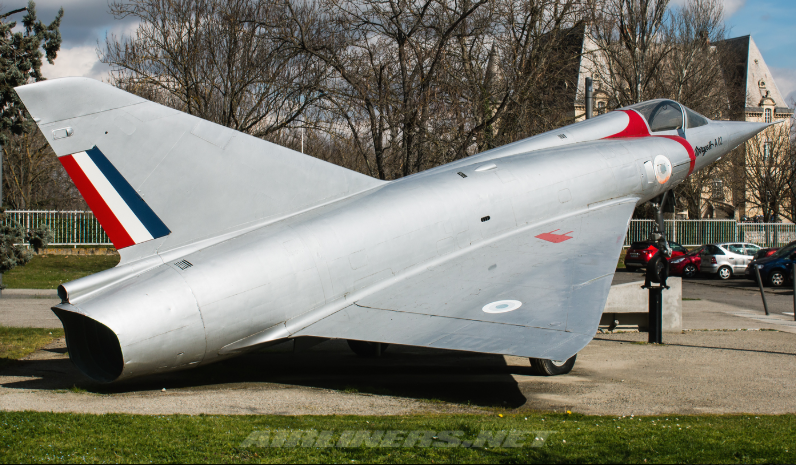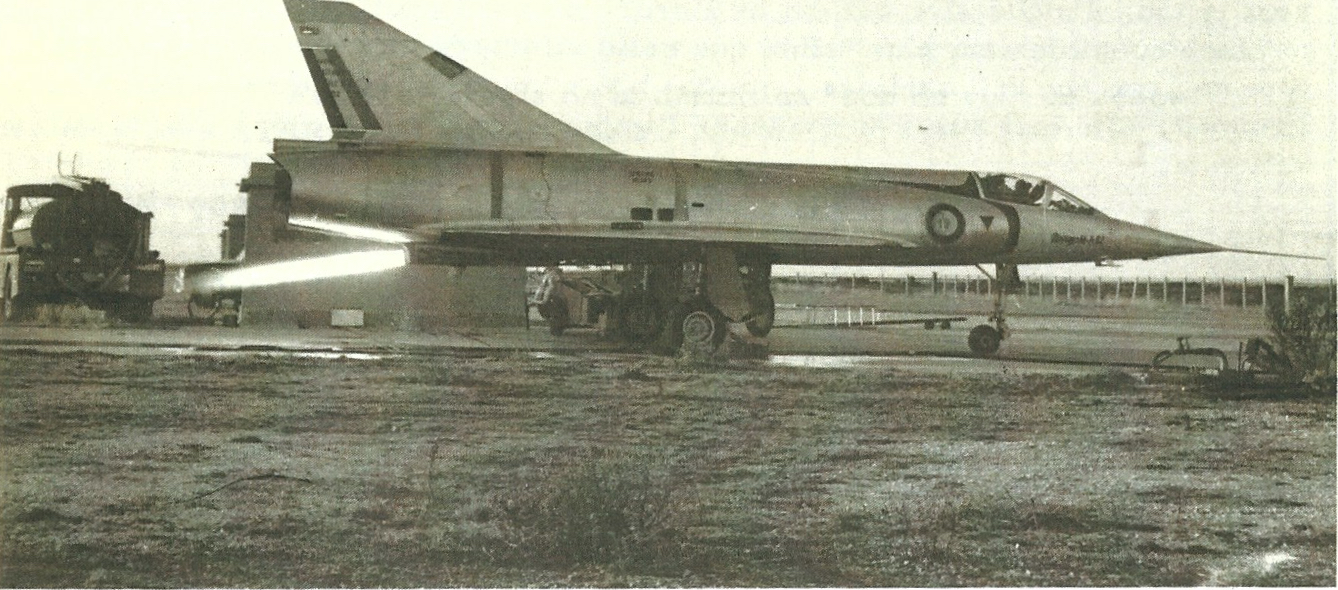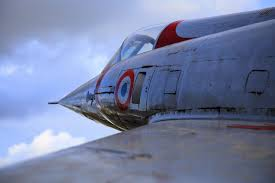What is this aircraft?
The aircraft that is displayed is a prototype that served in the developpement of the Dassault Mirage III. The Mirage III is an iconic aircraft from the 1960s and 1970s that competed against the most best performing aircrafts of its time. In particular, it was the first European aircraft to reach Mach 2 in level flight, 2 months before its English rival: the Lightning. Its delta wing with a large sweep angle (60 °) reduces supersonic drag and ensures high robustness to load factor and therefore excellent maneuverability. Its Snecma ATAR 9 engine with afterburner provides the Mirage III an impressive climb rate and acceleration.

The Mirage A 02 of ISAE-SUPAERO
The displayed aircraft
This aircraft is the second pre production aircraft, the Mirage III A 02. He has been used for the developpement of the SEPR auxiliary rocket system, which gives the aircraft improved performances. The following photograph shows the SEPR system during a ground test, on the Mirage III A 07, on other pre production aircraft very similar to the A 02.

After its retirement in the late 1970s, the aircraft was set on static display on the campus of ENSICA, an aerospace engineering school. In 2015, when ENSICA and Supaéro merged into ISAE, the aircraft was moved to its current location, near the facilitites of the DMSM and DAEP.
Some interesting facts...
- The origine of the name 'Mirage' is given by Marcel Dassault: “Its name comes from the exceptional qualities of the aircraft that make it dangerous for the enemy. When it is in danger, its great escape capabilities make it impossible to shoot. Therefore, as a comparison with the desert voyager who, when he sees a mirage, follows it and never reaches it, we have named this exceptional aircraft, Mirage.”
- The Mirage III A 02 is currently in the same livery as its first.
- The Mirage III A 02 is the first pre production aircraft to test the SEPR rocket booster on February 18, 1958.
- The Mirage III had a drag chute which allowed it to reduce its stopping distance, it is still possible to notice the housing for this parachute at the rear of the plane above the nozzle.
The Mirage III

The Mirage A 02
Performances
- Max speed: Mach 2.2 / 2337 km/h (at 15000m with SEPR rocket booster)
- Service Ceiling: 20,000 m
- Climbing speed: 5,000 m/min
- Range: 1,200 km
- Motorization: Snecma ATAR 9B / 9C 6000/6200 kg of thrust + SEPR booster rocket if installed
Weaponry
The Mirage III comes at a time when air combat begins to be dominated by the use of air-to-air missiles and its weaponry reflects this:
- 2 DEFA 552A 30mm cannons (1200 rounds per minute each, 250 rounds)
- Hardpoints for 3 air-to-air missiles or 3 tons of payload (bombs, rockets ...)
Exports
In the context of the Cold War, many countries sought to remain independent from the two superpowers and buying French fighter planes guaranteed this independence. France was then one of the only countries other than the United States and the Soviet Union to offer combat aircrafts whose performance was similar to latest American and Soviet models. The Mirage III also received positive feedback from Israeli pilots at the start of its career. It has therefore been very successful on the export market and has been used by 11 countries: South Africa, Argentina, Australia, Brazil, Spain, France, Israel, Lebanon, Pakistan, Switzerland, Venezuela.
Operational life
The most notable conflict in which the Mirage III participated was the Six Day War which took place in June 1967 between Israel and its Arab neighbors. The Mirages III then had to compete with the fearsome MiG 21, a state-of-the-art Soviet fighter also equipped with a delta wing and a powerful engine. The two planes had rather similar characteristics, but the Israeli employment doctrine gave the Mirage III a decisive advantage. Indeed, the Israeli air force claimed 28 MiG 21 destroyed for 6 Mirages III shot down. The Mirage III was then engaged in the third Indo-Pakistani war of 1971, in the Yom Kippur war of 1973 and in the Falklands war in 1982.
Versions
Originally designed to be only an interceptor, the fighter proves to be so efficient that it will be available in many versions to serve completely different roles:
- Mirage IIIA: this is the version of the model presented here, the Mirage IIIA is the pre-production version of the Mirage III
- Mirage IIIB: two-seater training version, it does not carry any guns or radar
- Mirage IIIC: interceptor version equipped with Cyrano 1bis targeting radar
- Mirage IIIE: All weather ground attack version equipped with Cyrano 2 targeting radar and a new ATAR 9C engine. This version also had a nuclear deterrent capability
- Mirage IIIR: Reconnaissance version equipped with 5 cameras in the nose of the plane. Cannons are optional